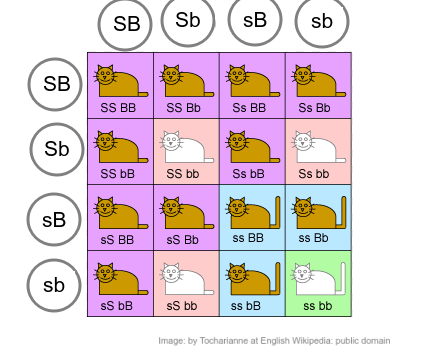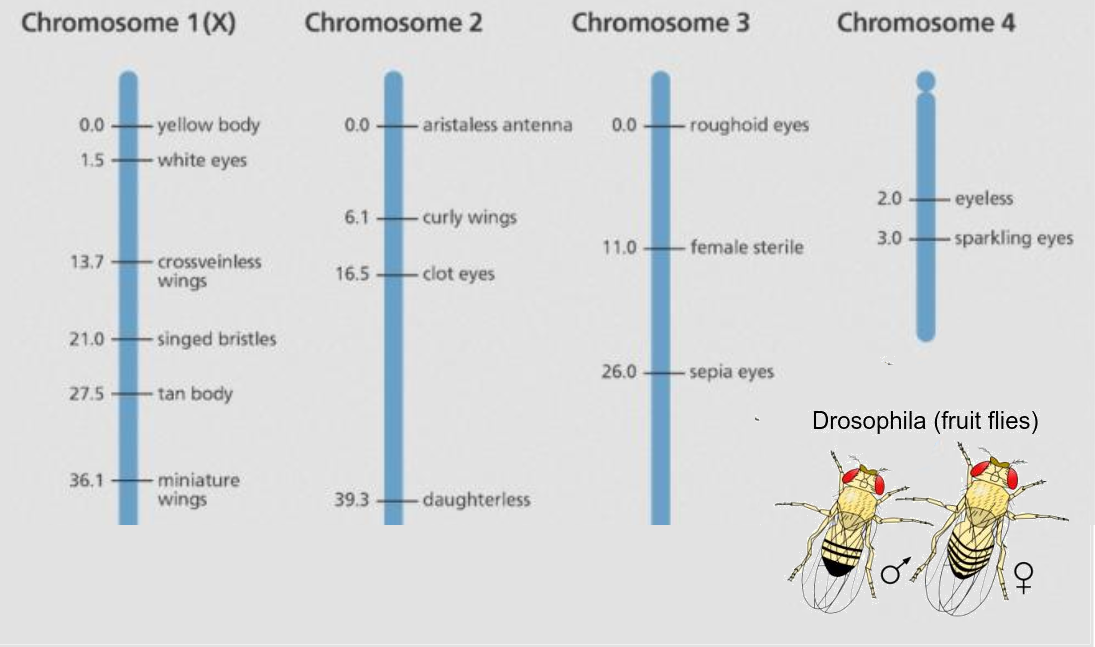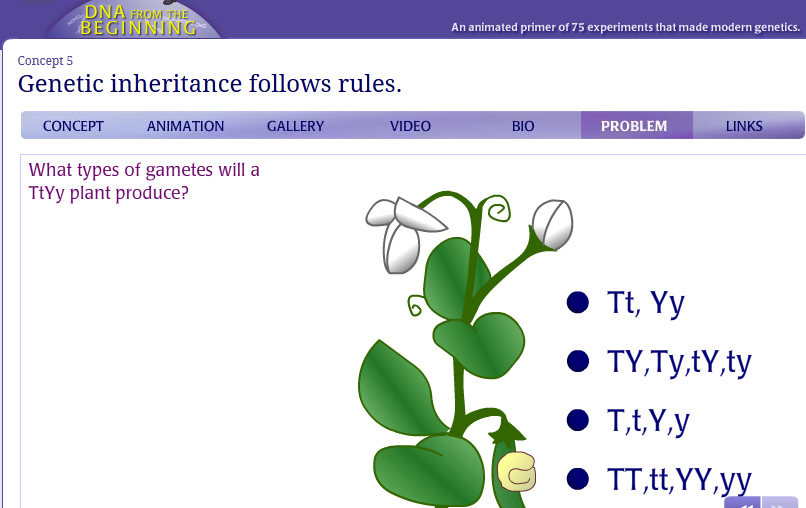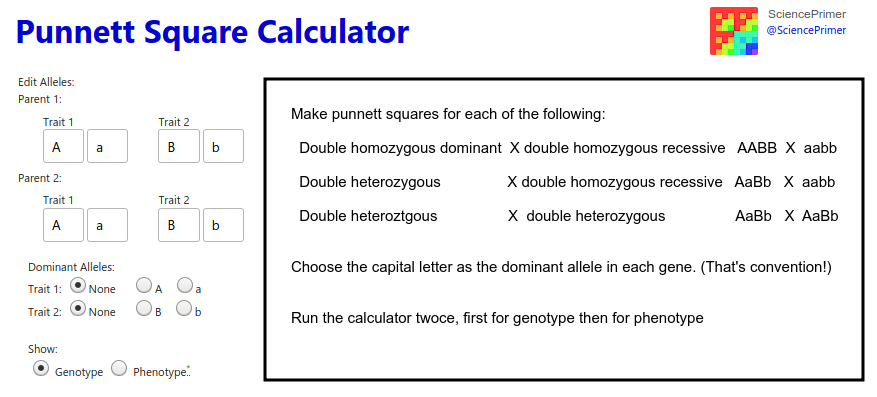Di-Hybrid Crosses.
 |
This lesson gives students a guided tour of dihybrid genetic crosses using Punnett squares predicting the combination of alleles from two unlinked genes at the same time. The method described provides a good foundation for the more complex examples which come later. A quick animated introduction is followed by some di-hybrid genetics problems. An extension task for faster students provides a selection of dihybrid problems to concludes this activity.
Lesson Description
 Guiding Questions
Guiding Questions
Will two different genetic characteristics always be inherited separately?
Which of the traits in the image might not be inherited separately?
Activity 1 Perform a Di-hybrid cross
Work through this ![]() Worked example of a di-hybrid cross - online animation. It explains how to calculate and predict genotypes with two genes at a time.
Worked example of a di-hybrid cross - online animation. It explains how to calculate and predict genotypes with two genes at a time.
Activity 2: Di-hybrid Crosses - a few questions
Read the instructions about completing punnet squares for di-hybrid genetics problems and then answer the introductory questions on the ![]() Dihybrid Crosses Student Worksheet
Dihybrid Crosses Student Worksheet
Activity 3: More practice
Choose an extension activity from list below.
- Try this extra dihybrid cross question.
 Burmese python inheritance activity including a test cross
Burmese python inheritance activity including a test cross
- Use this online Punnett square calculator to work out inheritance patterns.
Change the genotypes of each trait in the calculator using the three suggestions in the image.
See the Punnett square instantly. Make a collection of screenshots. Write a statement next to each image.
- Answer the additional questions on dihybrid crosses in your text book.
- or attempt these
 great self-marking online summary questions
great self-marking online summary questions
Teachers notes
Activity 1 shows students, step by step, how to do punnet squares for two genes at the same time for the dihybrid crosses.
Activity 2 has a worked example which is followed by some problems for students to solve themselves.
There are also Dihybrid questions model answers (improved) for the questions in activity 2
Activity 3 includes a collection of activities to further test student skills.

 IB Docs (2) Team
IB Docs (2) Team


